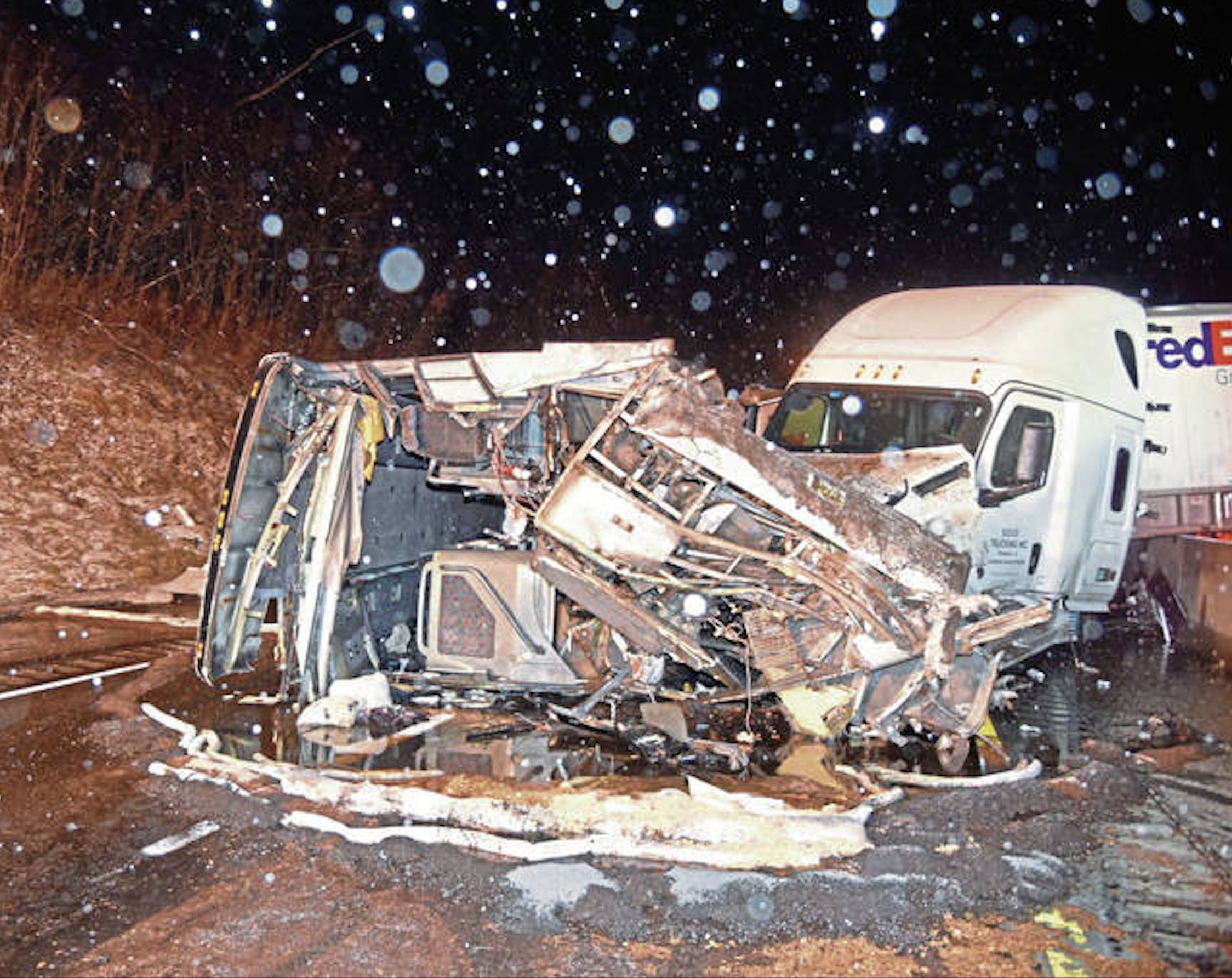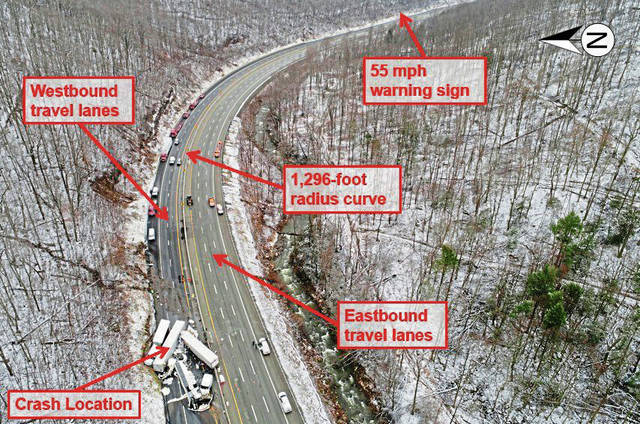Feds say ‘excessive speed’ caused PA Turnpike pileup that killed five

This week, the National Transportation Safety Board (NTSB) released a final report on a major pileup crash that occurred on the Pennsylvania Turnpike in January 2020.
The NTSB report released on February 8 determined that “excessive speed” was the cause of a crash that occurred in the westbound lanes of the Pennsylvania Turnpike about 30 miles east of Pittsburgh on January 5, 2020.

The crash began when 58 year old Z&D Tours bus driver Shuang Oing Feng allegedly lost control on a downhill curve, striking a concrete median and then shooting up an embankment.
The tour bus then rolled onto the passenger side, coming to a stop in active lanes of traffic on the Turnpike. A FedEx truck struck the bus, then a second semi truck struck both the bus and the FedEx truck.
A car and a third semi truck both swerved off the roadway to avoid the wrecked vehicles.
Five people perished in the crash, including Feng, who was ejected, both occupants of the second semi truck, and two bus passengers. Fifty other people were injured in the crash.
From the NTSB report:
The NTSB found during its investigation the regulatory speed limit on the turnpike was 70 mph. An advisory speed sign of 55 mph, posted at the curve where the crash occurred, recommended that motorists reduce their speed before entering.
The motorcoach driver entered the curve at 77 mph and struck the embankment at a speed of about 60 mph before overturning. The first truck hit the motorcoach at a speed of about 21 mph, causing minor damage. The second truck crashed into the first truck and the motorcoach, causing catastrophic damage; its last recorded speed was 56 mph. All three trucks involved were equipped with forward collision avoidance systems. The system on the second truck was inoperative at the time of the crash because of a misalignment in the radar on which the system depended.
“This investigation is a tragic reminder that speed kills,” said NTSB Chair Jennifer Homendy. “But it’s about more than driver behavior, which is why our recommendations take a comprehensive approach to promote safe speeds. This includes engineering safety into our policies, regulations and our infrastructure to save lives.”